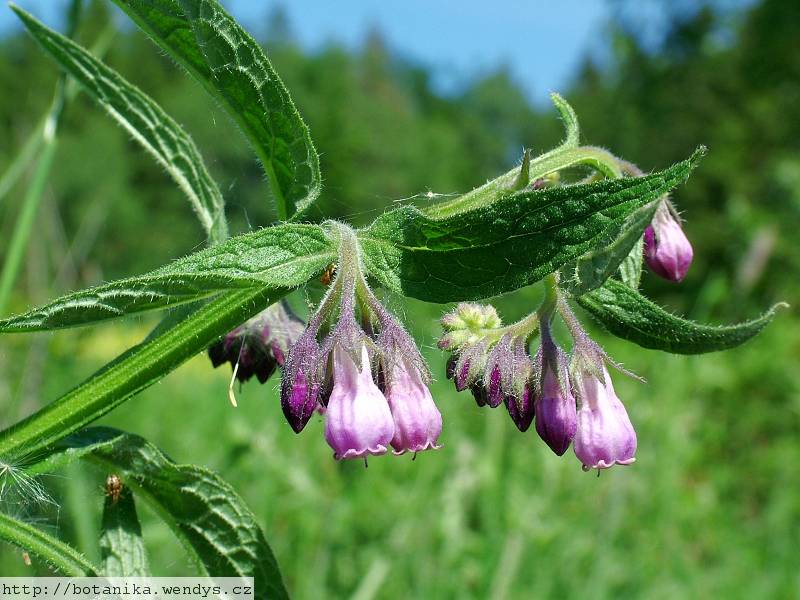

Comfrey symphytum officinale plants how to#
To learn how to make your own comfrey compost tea and how it benefits your garden, read our blog, Comfrey: Your Compost Companion. Because the plant yields large amounts of leaves, breaks down quickly and contains natural compost activators, you can create a compost tea from comfrey for fertilizing your plants. More recently, Comfrey has been the subject of a hot new composting trend. Comfrey (Symphytum officinale) Black Wort Boneset Heirloom Herb Perennial Height 24-42 in Comfrey, is a genus of flowering plants in the borage family. Though it makes a beautiful addition to the garden, it can sometimes be bothersome to get rid of, as new shoots grow easily from pieces of severed roots. You can then soak the sunburned areas in the cooled tea to help reduce pain and discomfort, and promote healthy skin regeneration.Ĭomfrey enjoys a wet, shady area and will do well in most soil types. Just steep fresh comfrey into a tea for external use, by straining the leaves and letting it cool. The plant's natural Allantoin levels also make it a great herb for after sun care.
_3.jpg)
When mashed and heated into a poultice or applied as a salve, Comfrey can also make a wonderfully mild astringent great for ulcers and sores. Symphytum officinale Common Name (s): Black wort Boneset Bruise wort Comfrey Common Comfrey Consound Cultivated Comfrey Knitbone Quaker Comfrey Slippery-Root True Comfrey Phonetic Spelling sim-FY-tum oh-fiss-ih-NAH-lee This plant has medium severity poison characteristics. Common Comfrey is also referred to as ‘Knitbone’ as it is the plant's high concentration of Allantoin that helps reduce inflammation of sprains and broken bones. It has very deep roots and will bring up nutrients from deep underground and concentrate them in the. Comfrey is one of our most popular medicinal herbs. Bees, butterflies and beneficial insects love this plant.


 0 kommentar(er)
0 kommentar(er)
